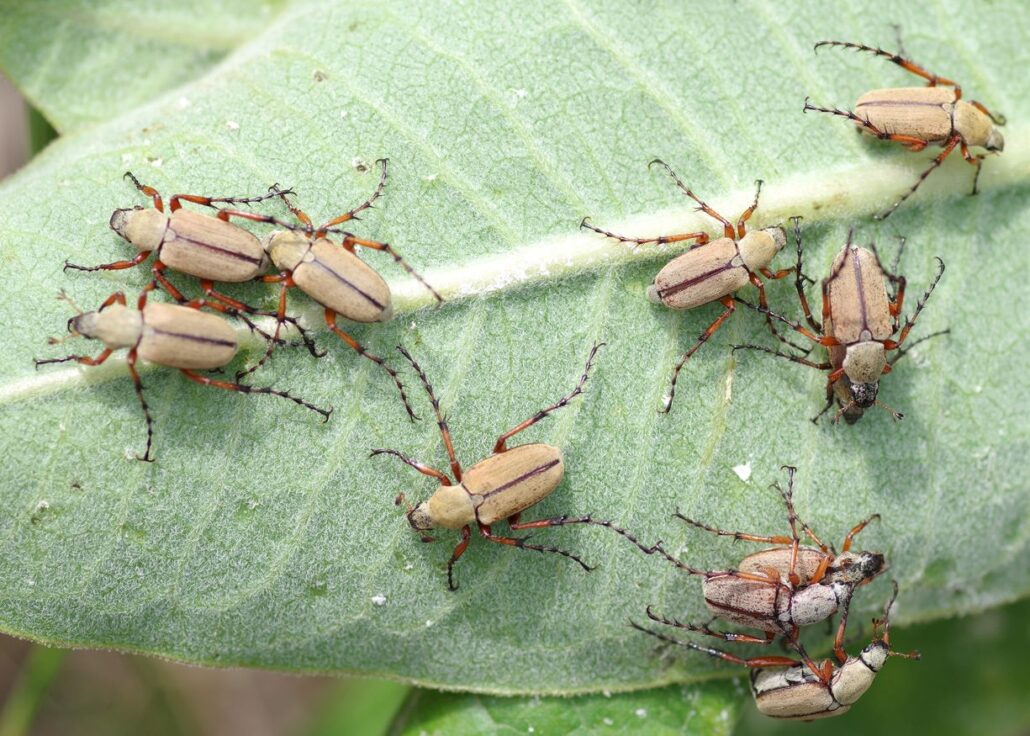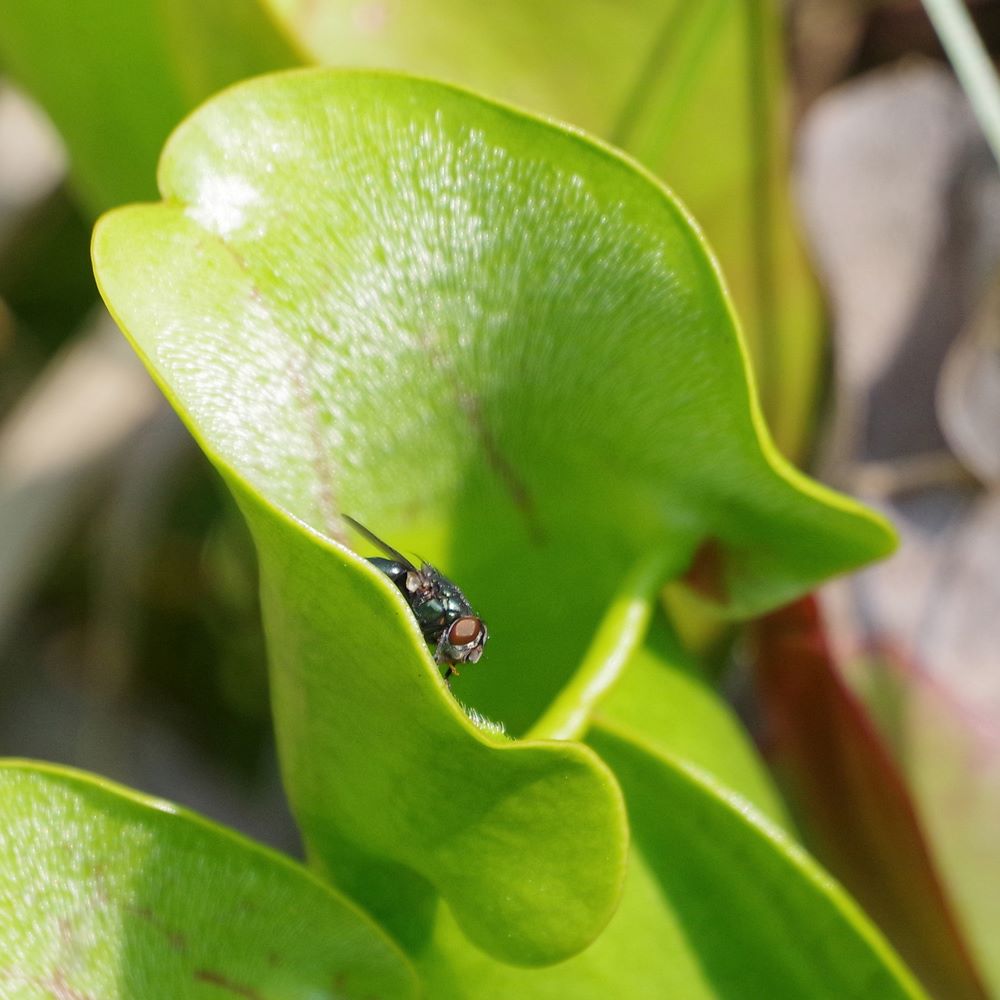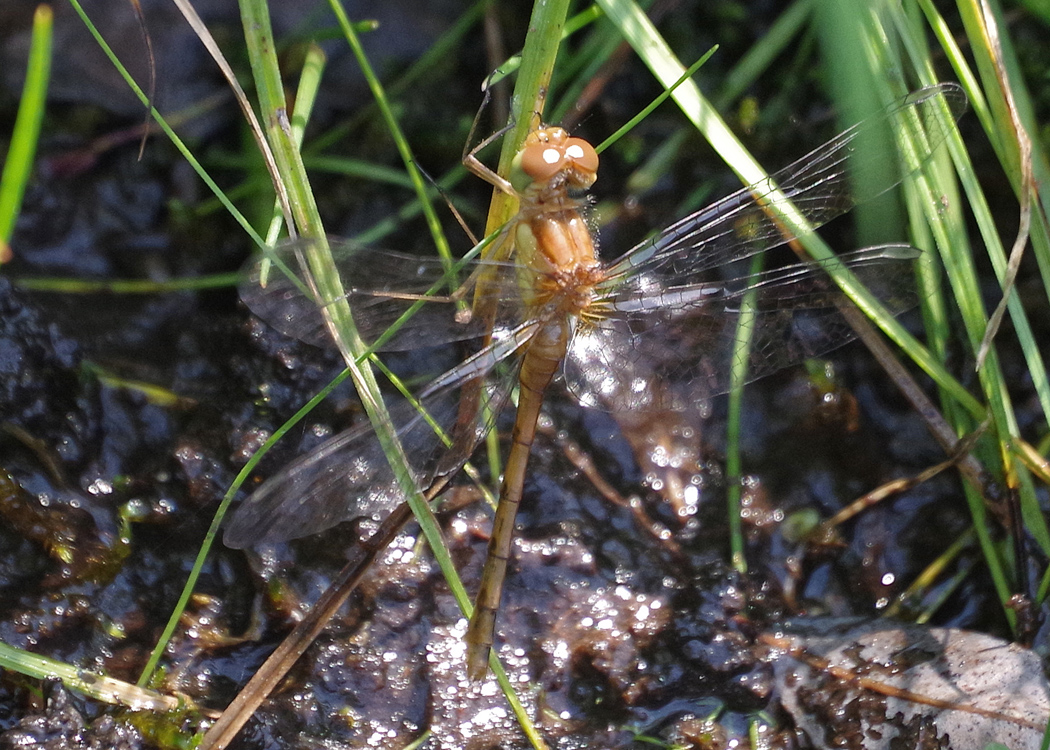
by Kate Redmond
Summer Sights
Greetings, BugFans,
The BugLady has been scouring the landscape and aiming her camera at anything that will sit still for it (and some that won’t). And (without going too overboard on dragonflies and damselflies), here are some of her bug adventures.
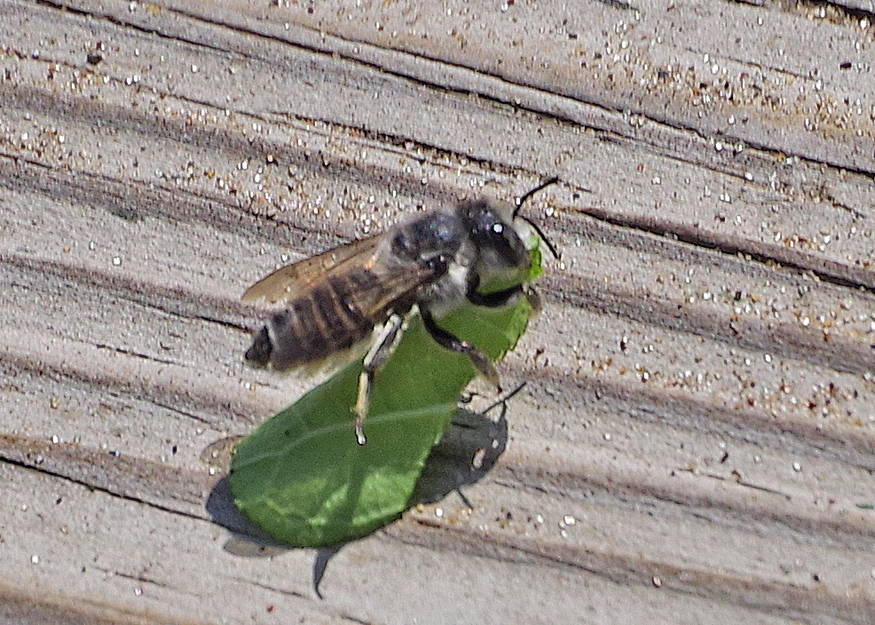
LEAFCUTTER BEE – ah, the one that got away. The BugLady saw a lump on a boardwalk in front of her and automatically aimed her camera at it (a long lens is a good substitute for a pair of binoculars). The lump – a leafcutter bee – flew off after one, out-of-focus shot. The bee had paused while she was cutting and collecting pieces of vegetation to line the tunnel and chambers where she’ll lay her eggs (here’s one caught in the act https://bugguide.net/node/view/2150206/bgimage).
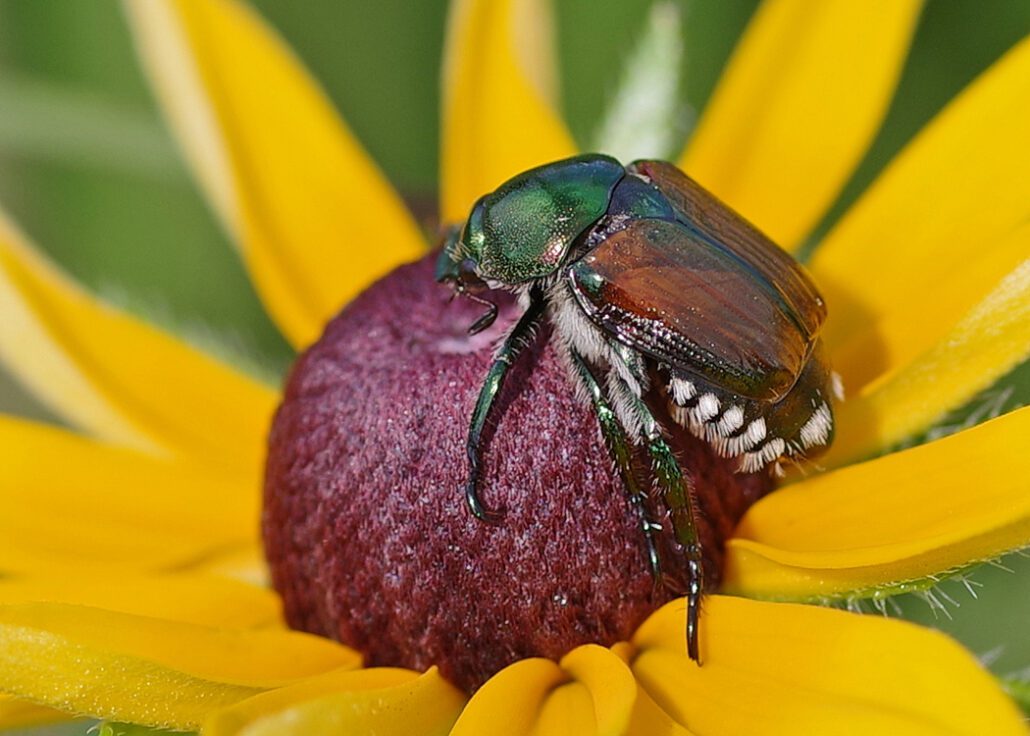
JAPANESE BEETLE – lots of the vegetation that the BugLady sees these days is pockmarked with small holes – evidence of feeding by Japanese beetles (of course, she’s also been seeing conspicuous, beetle ménages a trois on the tops of those leaves, too). Japanese beetles made their North American debut in New Jersey in 1916, and their menu now includes more than 350 plant species. But – they are a handsome beetle!
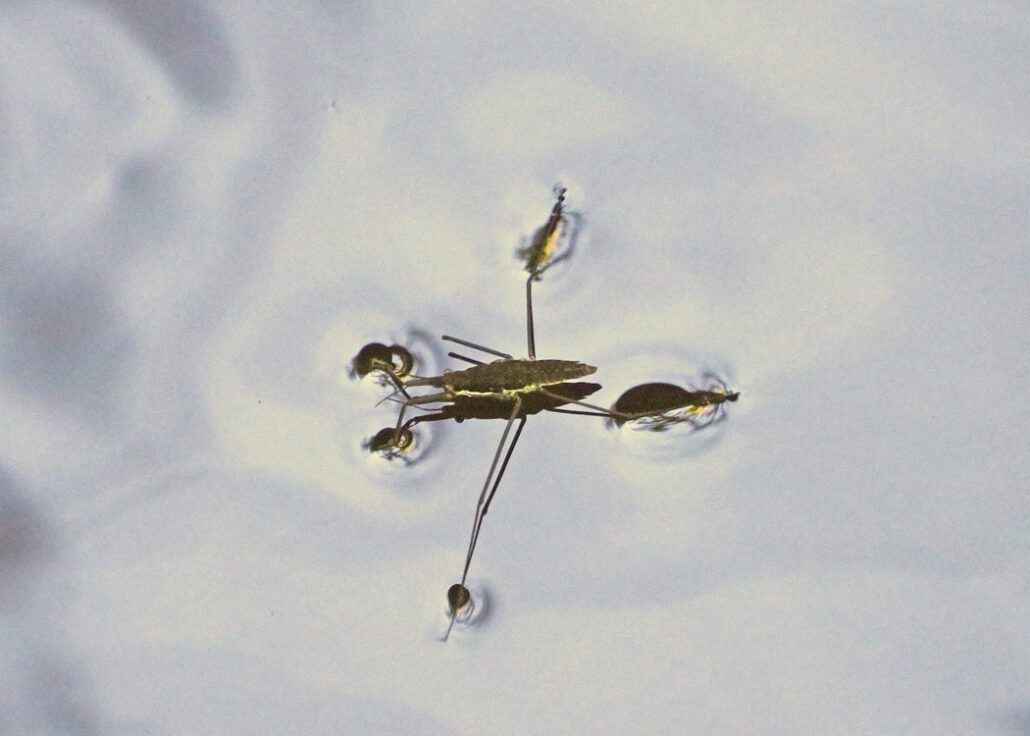
WATER STRIDERS create art wherever they go.
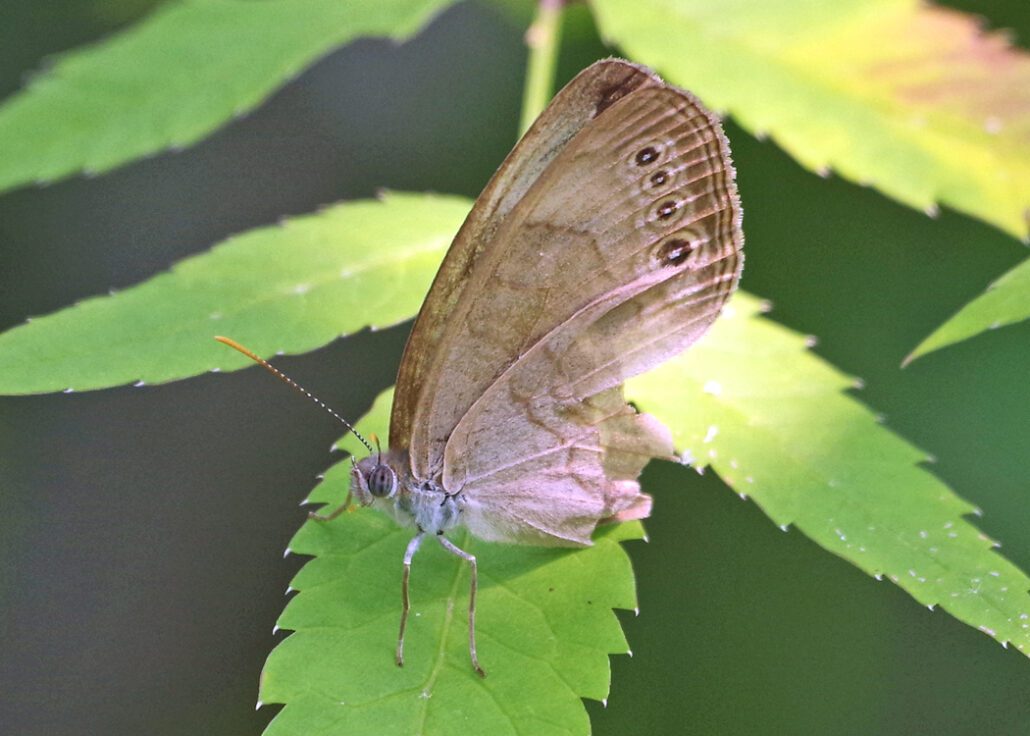
APPALACHIAN BROWN BUTTERFLY (probably) (the part of the hindwing that has the squiggly line that helps distinguish the Eyed Brown from the Appalachian Brown is gone). Life in the wild isn’t all beer and skittles. The chunks missing from this butterfly’s wings suggest that a bird chased it and that most of the butterfly got away.
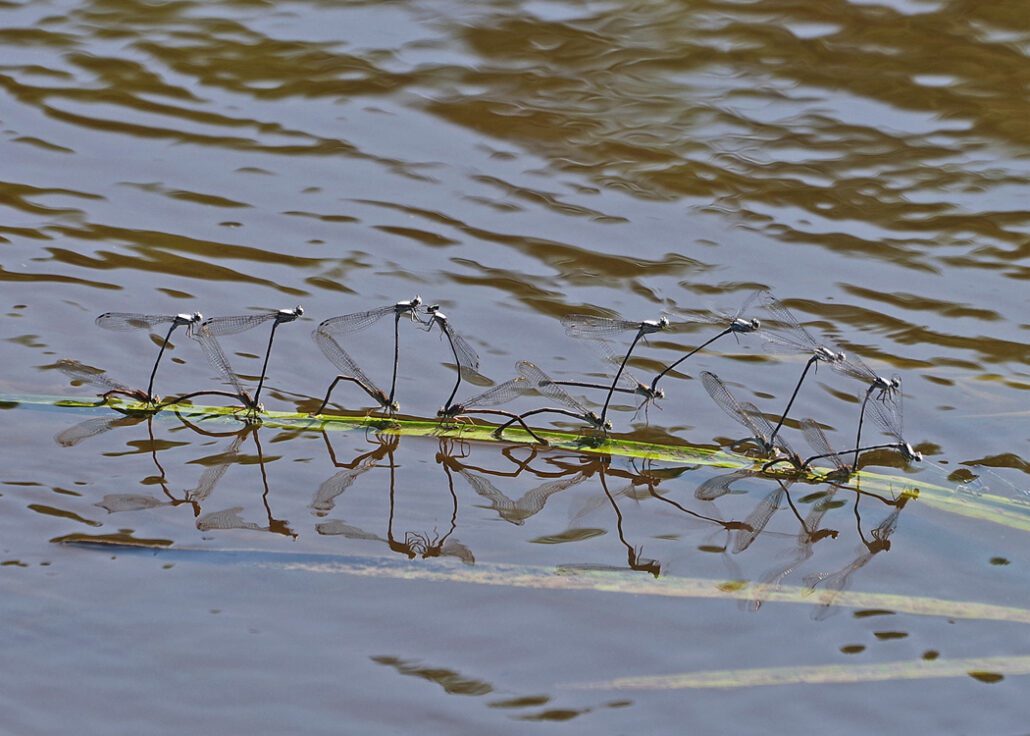
POWDERED DANCER – in an episode a month ago, the BugLady lamented that the river was so high and fast that Powdered Dancers couldn’t find any aquatic vegetation to oviposit in. A dryer spell revealed some weed patches, and the dancers hopped right onboard.
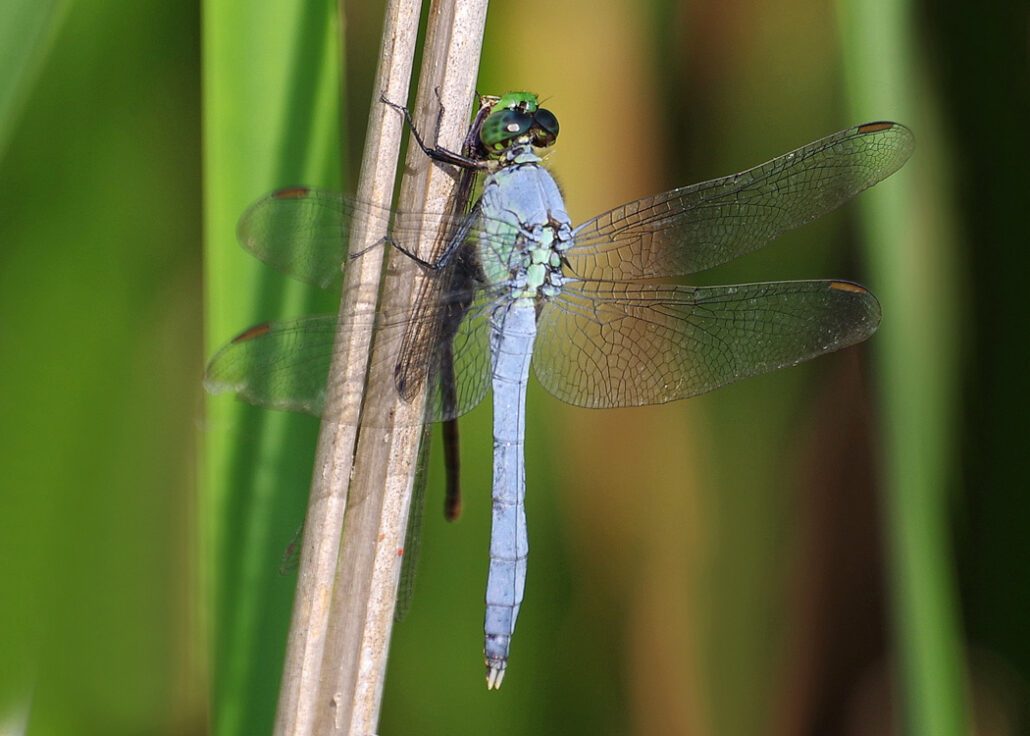
EASTERN PONDHAWK DRAGONFLY – this male Eastern Pondhawk was hugging the cattail stalk, a posture that’s not characteristic of this usually-horizontal species. Turns out that it had captured a Violet/Variable Dancer damselfly and was holding it closely between its body and the cattail.
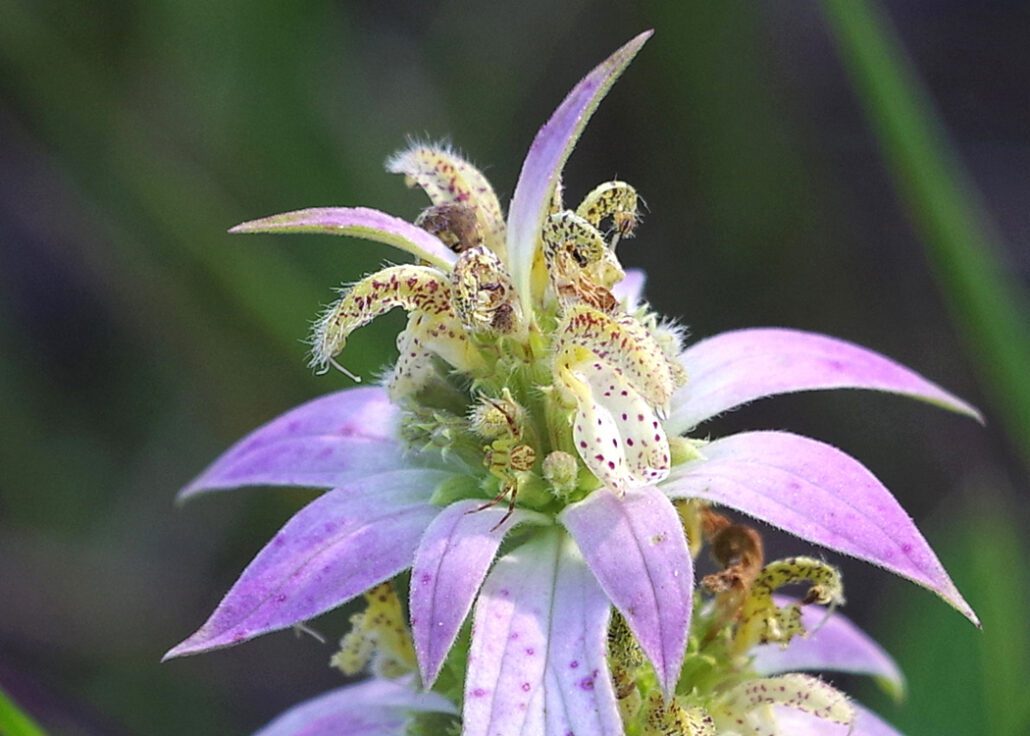
CRAB SPIDER – what would a summer summary be without one of the BugLady’s favorite spiders, the Crab spider? Where’s Waldo? Bonus points if you know the name of the plant.
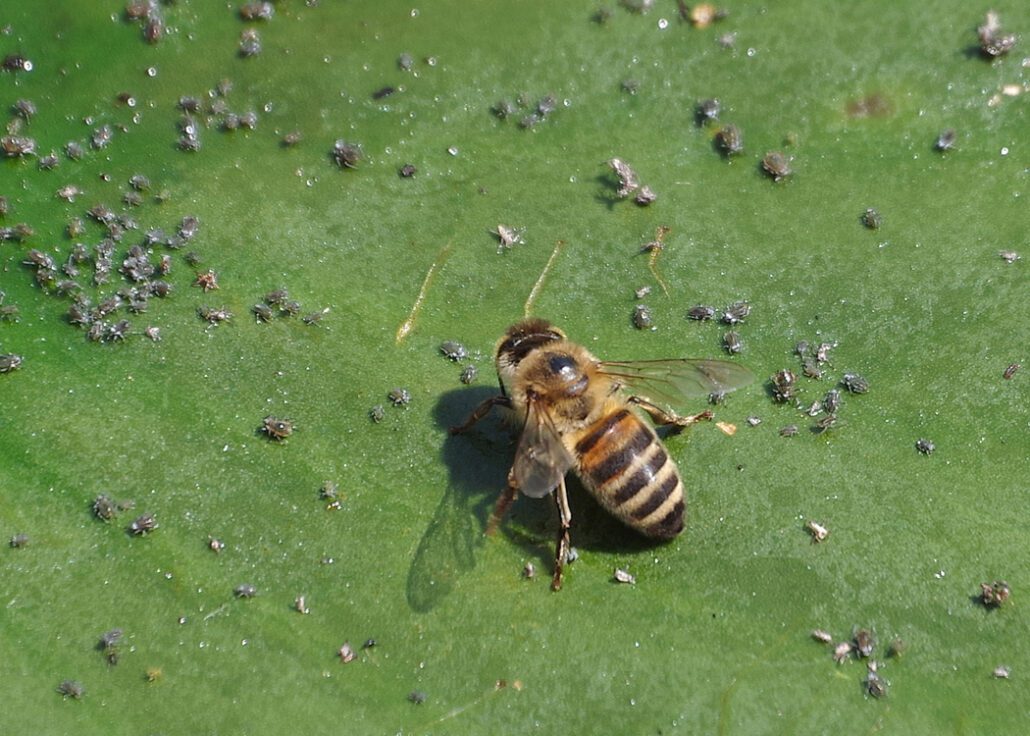
HONEY BEE WITH APHIDS – it’s not surprising to see yellowjackets browsing among herds of water lily aphids – adult yellowjackets are (mostly) vegetarians, but they collect, masticate, and regurgitate small insects for their larvae. Honey bees are hard-core vegans, so what’s going on here?
Aphids overeat. They have to – the plant sap they suck in has very low concentrations of sugars and proteins, so they need to process a lot of it in order to get enough calories. Sap comes out of the plant under pressure, which forces the sap through the aphid smartly, and the extra liquids (in the form of a sweet substance called honeydew), exit to the rear of the aphid (or it would explode). Honeydew drops onto the surrounding leaves and attracts other insects that harvest it. The bee is no threat to the aphids, she’s just collecting honeydew.
Fun Fact – according to Master beekeeper Rusty Burlew, writing in her blog “Honey Bee Suite, “The bees treat the substance like nectar so it is often mixed together with the nectar from flowers. As such, it is not really noticeable in the finished honey. Honey made almost exclusively from honeydew is known as honeydew honey, forest honey, bug honey, flea honey, or tree honey. Sometimes it is named after its primary component, such as pine honey, fir honey, oak honey, etc. It is generally dark, strongly flavored, less acidic, and less sweet than floral honey.”
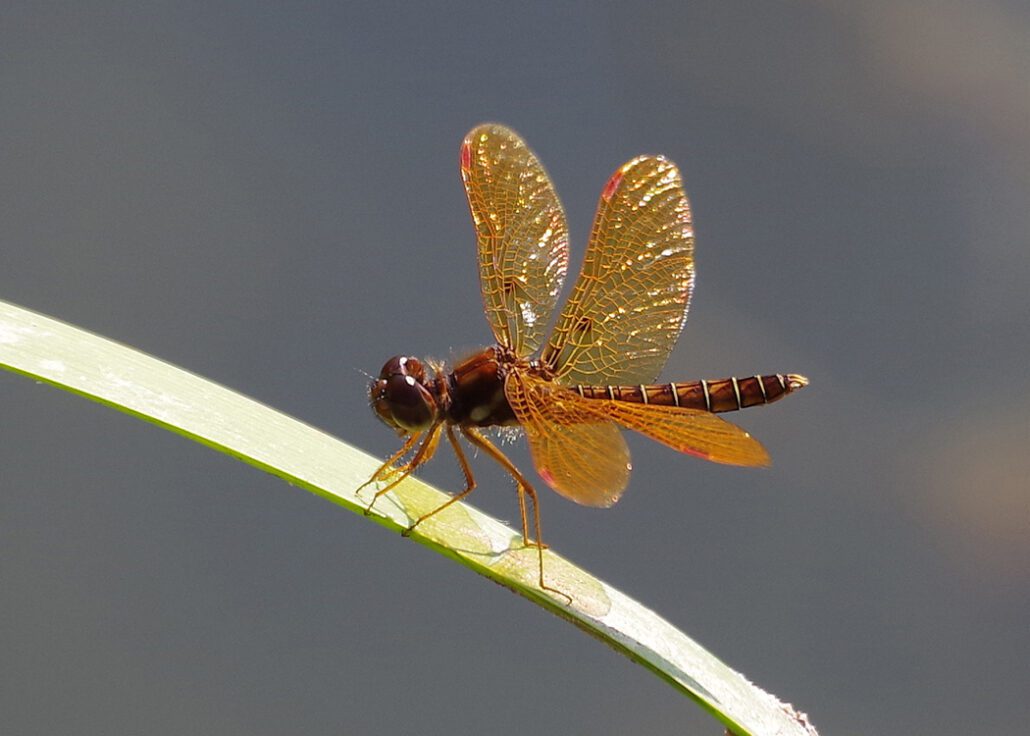
EASTERN AMBERWING – at barely an inch long, this improbably-colored dragonfly is one of our flashiest.
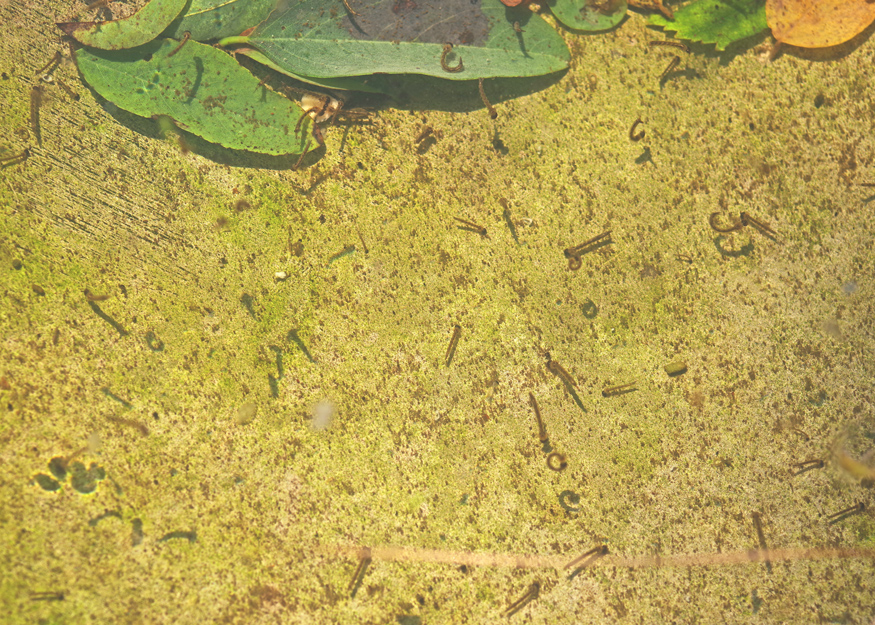
MOSQUITOES – Mosquito Control 101: “get rid of standing water in your yard!” Check. But, the BugLady has a bird bath (her “vintage” childhood saucer sled) that she washes out and refills at least once a week (or so she thought). She was surprised the other day to see a whole mess of mosquito “wigglers” (larvae) in the water. Worse, they probably were the small-but-mighty Floodwater mosquitoes that can make August miserable because they emerge in Biblical numbers, and because they seem to be biting with one end even before the other end has fully landed. They develop at warp speed – a week from egg to wiggler, and another week from wiggler to adult. Get rid of standing water in your yard. Check.
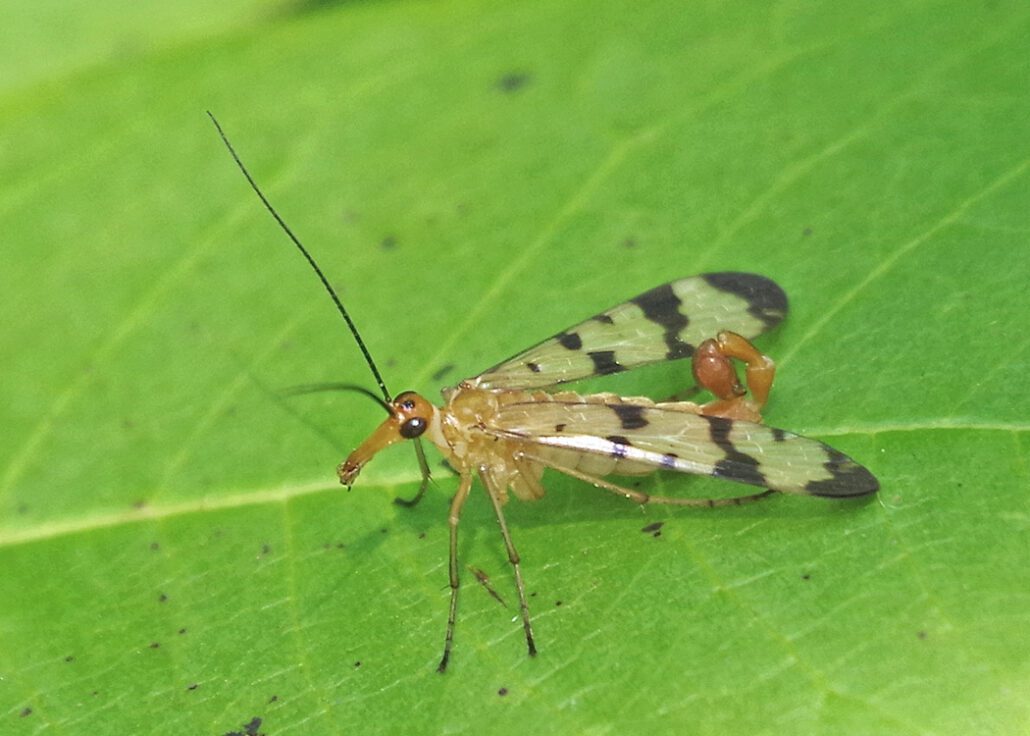
SCORPIONFLIES are odd-looking insects from a whole order of odd-looking insects (Mecoptera). This guy is in the Common scorpionfly family Panorpidae and in the genus Panorpa (which is a corruption of the Greek word for “locust”). The appendage at the end of the male’s abdomen explains its name, but these are harmless insects, fore and aft. One site mentioned they are wary and hard to photograph. Amen!
Panorpa uses chewing mouthparts at the tip of its elongated rostrum/snout to eat dead and dying insects, and it may liberate insects from spider webs (and sometimes the spider, too). It is also said to eat some nectar and rotting fruits.
He courts by releasing pheromones to attract her, quivering his wings when she comes near, and then offering a gift – a dead insect, or maybe some gelatinous goo manufactured in his salivary gland. He shares bodily fluids with her as she eats.
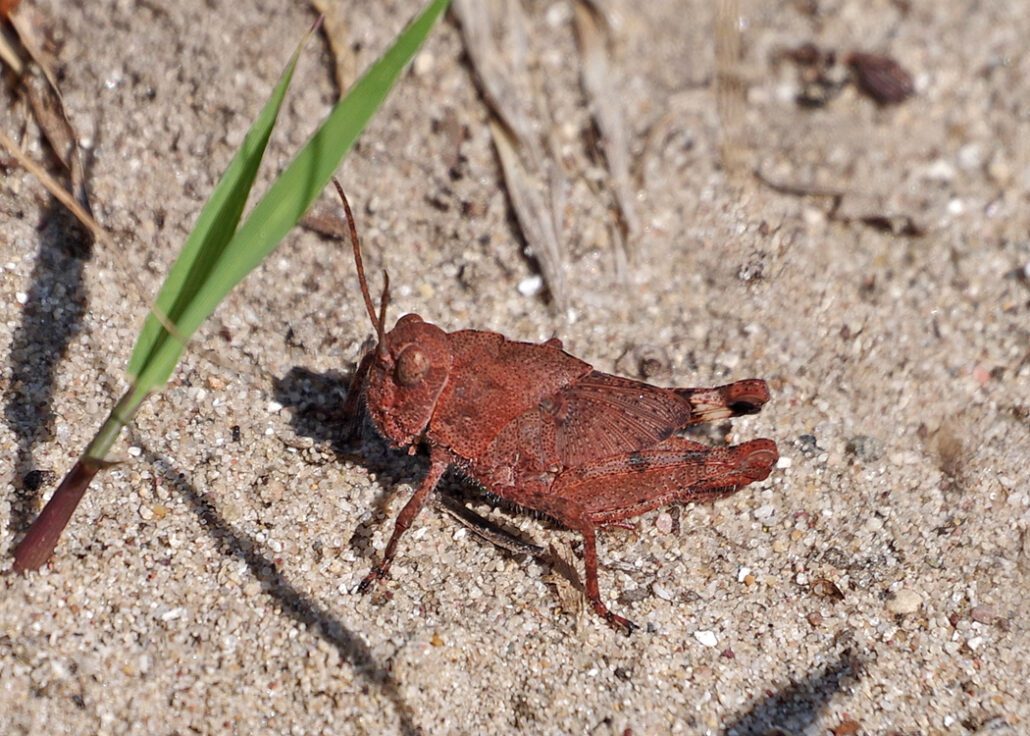
CAROLINA LOCUST – what a lovely, chunky little nymph!
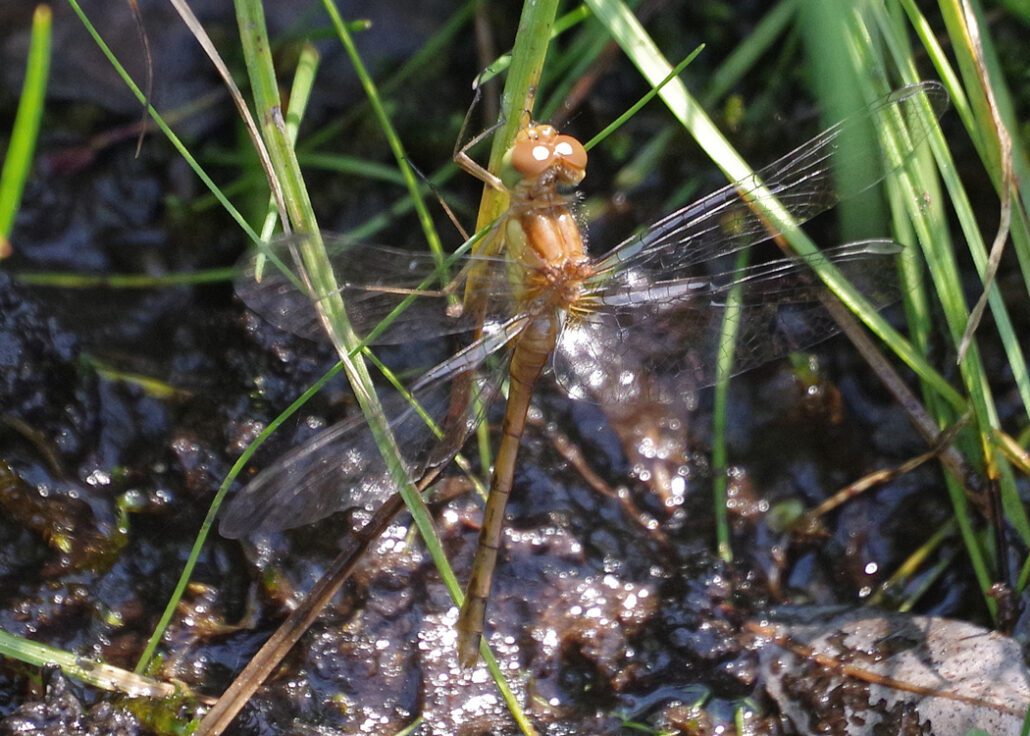
AUTUMN MEADOWHAWK – the dragonfly scene changes after mid-summer, with the early clubtails, emeralds, corporals, whitefaces, and skimmers being replaced by darners, saddlebags and a handful of meadowhawk species. This newly-minted (teneral) Autumn Meadowhawk has just left its watery nursery on its way to becoming – for the next six weeks or so – a creature of the air.
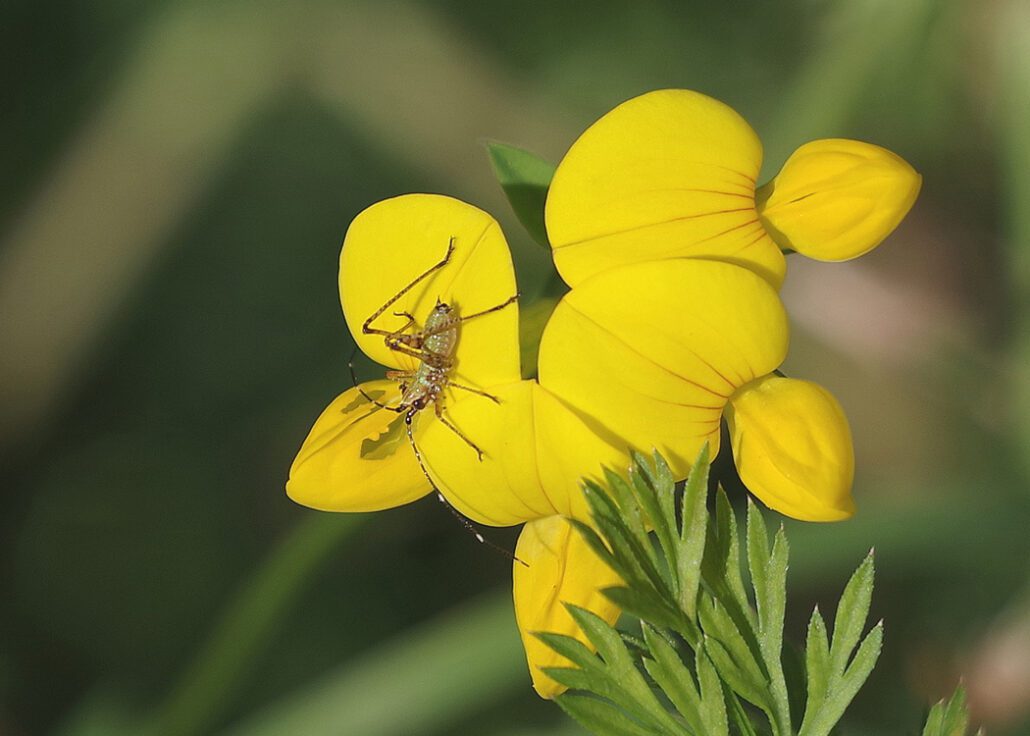
KATYDID NYMPH – the BugLady was photographing leafcutter bees that were visiting birdsfoot trefoil flowers (birdsfoot trefoil is a non-native member of the pea family that was introduced for animal fodder and erosion control and that can become invasive in grasslands. There’s probably some blooming along a road edge near you). She noticed that when the bees approached one particular flower, they reversed course and didn’t land, and when she checked she found the tiniest katydid nymph she has ever seen. This one will grow up considerably to be a 1 ½” to 2” long Fork-tailed bush katydid (or somebody else in the genus Scudderia) https://bugguide.net/node/view/2164189/bgimage. How do you find bush katydids? The “Listening to Insects” website advises us to “Watch for a leaf that moves on its own, or a leaf with antennae.” They are a favorite of Great golden digger wasps, which collect and cache them for their eventual larvae, and another website said “this is what bird food looks like.”
The BugLady found a recording of their call. They don’t say “Katy-did, Katy-didn’t;” they say “tsp” or “pffft,” and they don’t say it very loudly. Bush Katydids are busiest at night, when their long, highly sensory antennae help them to find their way around. Although adult females are equipped with a wicked-looking ovipositor, they don’t sting, but they do nip if you handle them wrong. Memorably, it’s said.
Go outside, look at bugs!
Kate Redmond, The BugLady
Bug of the Week archives:
http://uwm.edu/field-station/category/bug-of-the-week/

